
5 Easy Math Engagement Strategies for the Classroom
The news headlines are daunting. Math scores are down. School districts are scrambling to turn things around. And...
ALI Staff | Published January 22, 2024 | Updated December 08, 2025
STEM learning starts early in life. The moment children begin to physically interact with their environment, they begin processing how things work, laying the foundation for learning core elementary education concepts.
That’s why Preschool STEM activities and play-based learning are a great way for early childhood teachers to engage students in science, technology, engineering, and math.
These activities introduce foundational concepts for cross-curricular connections and deepen students’ interests in STEM, giving preschool teachers simple ways to bring inquiry-based learning into their classrooms.
They’re also fun!
Preschool teachers have a critical role in setting students up for STEM success. The good news is that most preschool classrooms already have many materials available to introduce basic STEM concepts.
If you’re unsure where to begin, this guide offers preschool activity ideas to get you and your students started.
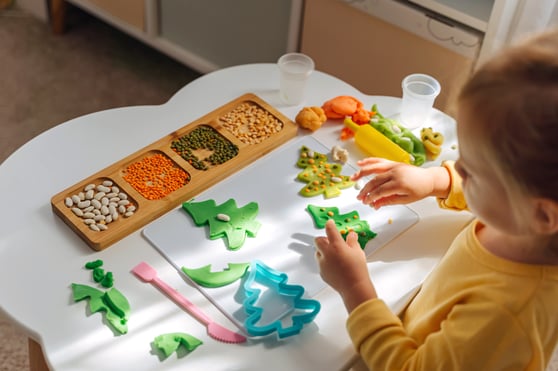
STEM projects for preschoolers promote hands-on learning, spark students’ curiosity, and set the foundation for skills like critical thinking that will be important in their school careers.
These activities go beyond rote learning and allow teachers to introduce students to inquiry-based discovery.
"Implementing preschool STEM activities like these reinforce developmental goals (fine motor skills, early math, early science reasoning) while also supporting state early learning standards."
What is an example of a STEM activity? An example of a STEM activity is any activity that uses science, technology, engineering, and mathematics to support student learning.
Building, exploring nature, and asking more “why” questions are all related to STEM.
Preschool STEM activities help preschool teachers build early STEM habits: curiosity, questioning, observation, and problem-solving.
Here are just some of the benefits of preschool STEM activities:
The activities listed ahead are preschool activity ideas that encourage authentic STEM thinking rather than rote tasks, helping teachers build a strong foundation before K–2 STEM instruction begins.
These kinds of activities fit smoothly into real classroom routines (centers, morning work, small groups) with minimal prep, which is a major benefit for early childhood teachers.
Implementing preschool STEM activities like these reinforce developmental goals (fine motor skills, early math, early science reasoning) while also supporting state early learning standards.
These activities model the types of learning experiences Accelerate Learning curriculum is designed to support.
For preschool teachers who want more structured, classroom-ready STEM support, both STEMscopes Early Explorer and Kide Science provide inquiry-based lessons designed specifically for early childhood learning.
These engaging preschool STEM ideas keep things simple for teachers with easy set-ups and accessible materials.
You know your students best. Adjust these activities based on the tools available and the needs of your classroom.
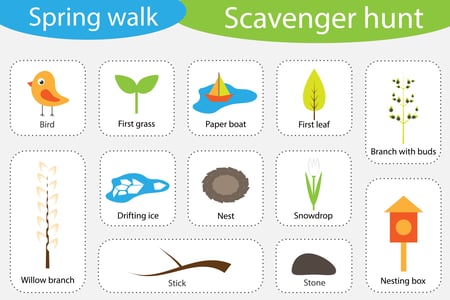
Students explore their immediate outdoor environment by collecting items from a visual provided by their teacher.
Consider different types of leaves, flowers, rocks, etc., that they can identify and sort back in the classroom.
STEM benefit(s): Students use observation skills and develop an early appreciation for nature and biology.
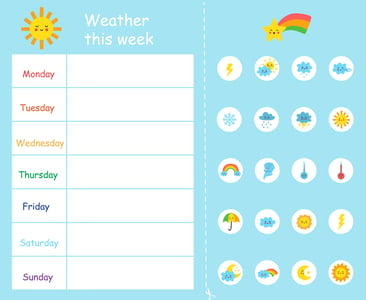
This is an easy activity to add to your daily routine.
Create a classroom weather chart that prompts questions about the weather. Ask students how that day’s weather system affects the day’s activities and what they wear to school.
STEM benefit(s): Students learn about making connections between weather patterns and their daily lives in a visual way.
Try a sample lesson from our early childhood program Kide Science - It's Raining! How do water droplets keep their shape? Download our playful inquiry lesson pack.

Students plant different seeds in the classroom and make observations about their plants.
They can observe plant growth, experiment with different lighting and plant foods, and complete connection activities about the life cycles of plants.
STEM benefit(s): This activity encourages students’ interest in the natural world and introduces them to simple experiments.
Take this activity a step further with a sample lesson from our Pre-K program, Kide Science. Download our free playful inquiry lesson pack to get access to - Flowery Business - How do plants drink?
For dinosaur-loving classrooms, this activity may be less messy if a little wet. Freeze dinosaur toys in a block of ice. Guide students in coming up with the best strategies to get the toys out of the ice, whether that’s warm water, simple classroom tools, or salt.
STEM benefit(s): Students are introduced to basic experiment skills, deductive reasoning, and paleontology.
Students use building blocks to meet a challenge provided by their teacher.
This can be building the tallest tower, constructing a structure strong enough to hold a piece of fruit, or working together to build block cities.
STEM benefit(s): This activity enhances spatial awareness, boosts students’ fine motor skills, and introduces basic engineering concepts.
If you teach somewhere with enough sun, have students use their bodies or classroom objects to observe the size and shapes of shadows.
They can trace the shadows on a sheet of paper to make this one a STEAM activity.
STEM benefit(s): This play-based activity teaches children about light, shadows, shapes, and spatial awareness.
In cloudy or rainy environments, take the shadow play indoors.
Using overhead projectors or flashlights, display different objects’ shadows on a blank surface. Show students how the size of shadows changes as the objects move closer or further away from a light source.
STEM benefit(s): Students use spatial reasoning to investigate basic concepts about shadow and light.
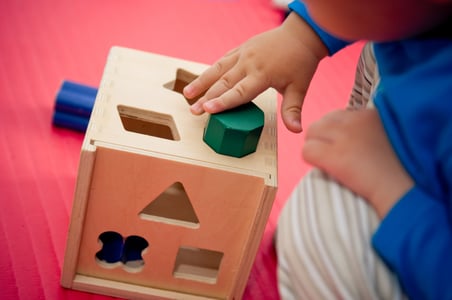
Students identify and sort objects based on shapes. This can be a 2D printout that they can color or a 3D activity using sorting maps and available materials around the classroom. This activity can be repeated throughout the year as children learn new shapes.
STEM benefit(s): This activity introduces basic geometry concepts and enhances students’ spatial reasoning skills.
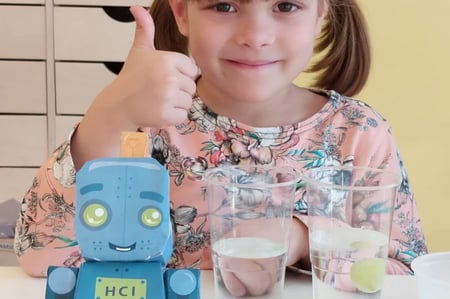
In this lesson from Kide Science, students predict whether grapes will float in different solutions of water and salt water. Lead extra curious preschoolers in a discussion about why they think that way and what made the grapes float.
STEM benefit(s): Students learn introductory concepts of density and buoyancy through hands-on experimentation.
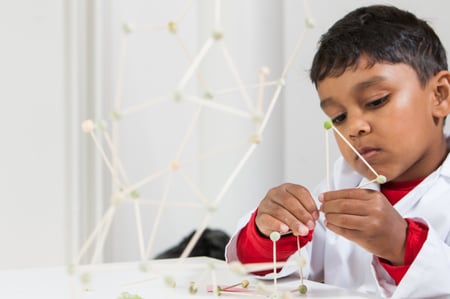
Lead students in building structures out of toothpicks to build the highest structure they can. In this inquiry- and story-based lesson from Kide Science, use the power of story to incite curiosity and help students engage in hands-on learning.
STEM benefit(s): This one goes beyond basic engineering. Students use critical thinking and math skills to work through this activity.
Students practice basic experimentation skills by learning what sticks to a magnet and what doesn’t.
Have students predict what they’ll be able to “catch” before hovering their magnets over different materials.
STEM benefit(s): Students are introduced to magnetism, a physics concept, through this play-based activity.
Bury toy dinosaurs in a sensory bin filled with sand or oil. Give students brushes, pails, and other excavation tools to unearth the dinosaurs. Take this one a step further with dinosaur ID cards they can match to what they find.
STEM benefit(s): Students become paleontologists by using their fine motor skills and sensory exploration.
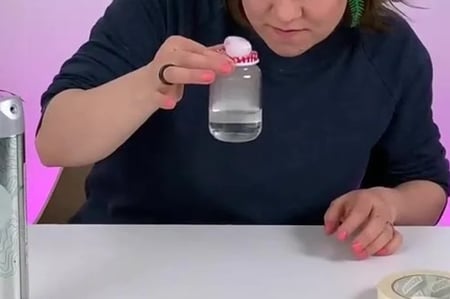
In this lesson from Kide Science, observe different steps of the water cycle and trap your very own cloud in a jar!
STEM benefit(s): Students are introduced to basic earth science concepts, including weather phenomena, states of matter, and the water cycle.
Students experiment by mixing primary colors to create new colors. Use washable paints or colored water for easy cleanup. Have them make predictions about the colors they’ll create, then lead a discussion about secondary colors.
STEM benefit(s): This activity introduces students to basic color theory and engages them in simple chemistry.
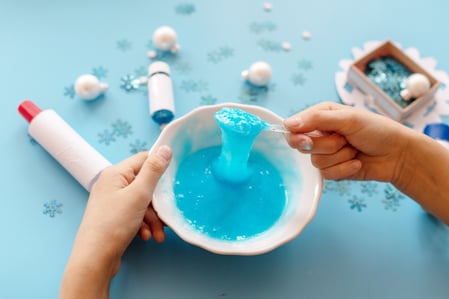
It’s a fact. Kids love slime. All you need for basic slime is water, white school glue, and borax. (Some recipes call for corn starches or contact solution in place of borax. You can experiment to find the right consistency!) Add food coloring or glitter to customize.
STEM benefit(s): This kind of tactile play allows students to use their sense of touch in a lesson about basic chemistry.
Using blocks, cardboard, cardstock, or a combination of materials, students build bridges to meet a given challenge. That can be building the longest bridge, building a bridge between two points, or building the strongest bridge. They can test their bridges using toy cars.
STEM benefit(s): Students learn easy engineering concepts like weight distribution while improving their fine motor skills.
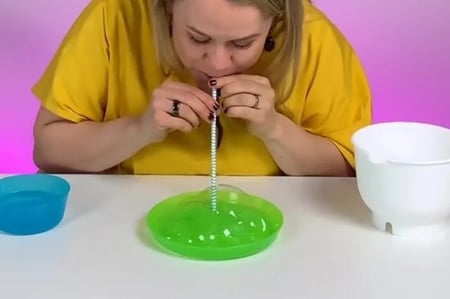
In this Kide Science activity, use a straw with a bubble solution to explore shapes and the formation of bubbles.
STEM benefit(s): This activity combines reading comprehension with basic science concepts of shapes, movement, and chemistry.
Students sort animals into different habitats after stories or instruction on the topic. Keep things simple with laminated printables, or use animal toys and plastic pieces for a 3D experience. Leave some time for play at the end of the activity.
STEM benefit(s): Students practice drawing conclusions about what animals need to survive in unique habitats.

Students build a simple rain gauge using a clear container to measure and record rainfall over time. Measuring tape or plastic rulers both work, but tools in a larger format may be best for preschool-aged students.
STEM benefit(s): This weather science activity combines all four STEM disciplines in one fun activity.
Students design then create a small parachute for a toy figurine. (Have them choose the figurine or bring one in from home for extra buy-in.) Tissue paper, plastic bags, or napkins all work as parachute material.
STEM benefit(s): Introduce tricky concepts like gravity, drag, and air resistance in a simplified way.
Use jumbo marshmallows and plastic straws to create building challenges for students. These can be about building multi-story structures, creating bridges, or making shapes out of their materials. Their final project can be a creation of their own making.
STEM benefit(s): Students are introduced to basic engineering concepts like design and structure while developing problem-solving skills.
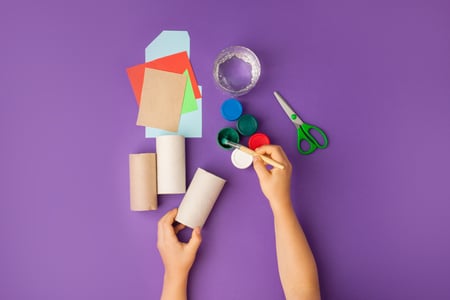
Guide students in building sculptures and crafts out of recycled materials. They can run loose with their ideas or build creations based on a given theme. Consider small group projects if the materials are larger.
STEM benefit(s): This one can be considered a STEAM project as students add their own creative spin on basic engineering concepts.
Students create musical instruments from regular classroom objects or recycled materials to explore the different sounds they can make. Think about DIY hand drums, paper plate tambourines, and spoon maracas.
STEM benefit(s): This activity explores basic science principles of sound and vibration while touching on STEAM and the benefits of music appreciation.
Create an opportunity for whole-class engagement as you brainstorm how to create the perfect container to keep an egg safe from breaking after a drop. Spend time on the design before the real experiment. Work with them to make adjustments if the first (or second) attempt fails.
STEM benefit(s): Students use critical thinking to test hypotheses, make adjustments, and draw conclusions while boosting their collaboration skills.
This activity requires some additional pre-planning, but taking students out of the classroom on STEM-related field trips is a great way to make what they’re learning more concrete. Botanic gardens, planetariums, and children’s museums are all great options for little ones.
STEM benefit(s): Students can connect to STEM concepts on a more interactive level, deepen their understanding of STEM, and have fun.
You can incorporate STEM in a preschool classroom by being creative with available materials and introducing more hands-on learning for your students.
Create opportunities to problem-solve with your students and explore solutions.
Take the lead from your students as to what drives them to engage with activities. That will make the learning more fun for everyone.

The news headlines are daunting. Math scores are down. School districts are scrambling to turn things around. And...

Math assessment in California is changing. What used to be a compliance exercise or reporting tool is now becoming a...

You know the moment: a student’s eyes light up when the science experiment fizzes or the math puzzle helps them...